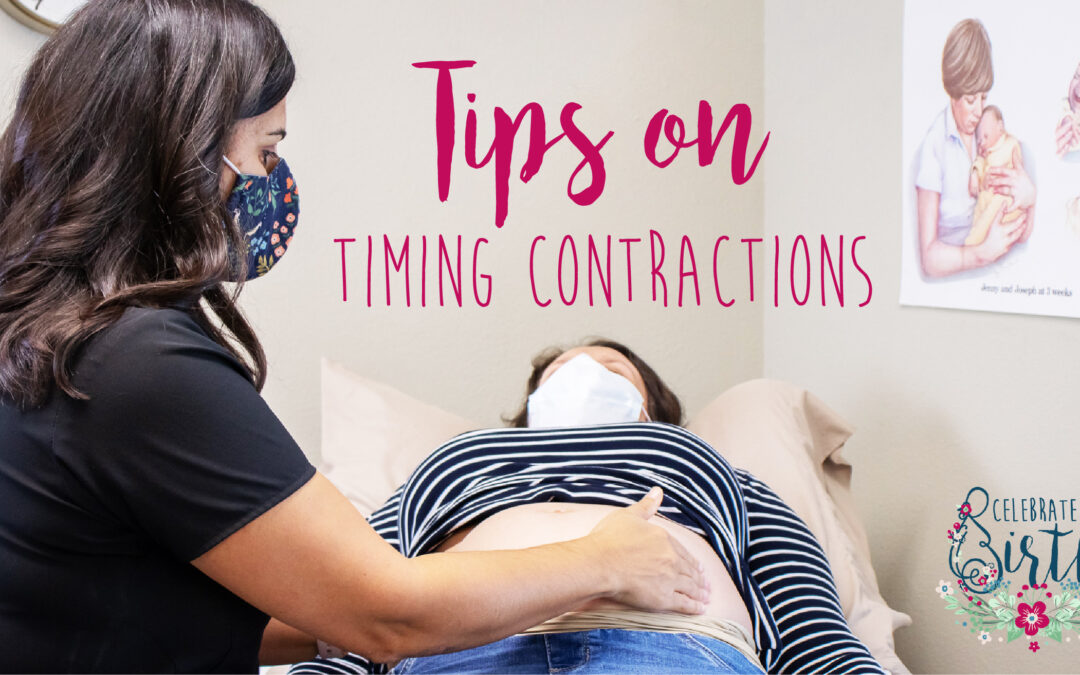Tips on Timing Contractions
Learning how to time contractions is an important step when you start approaching your estimated due date! It’s important to note that while there is a correct way to time contractions (from the start of one to the start of another), and that true labor contractions generally get longer, stronger, and closer together as they progress, every labor has its own unique pattern leading up to delivery. If you want to learn more, this is Celebrate Birth’s take on timing contractions!
When Should I Start Timing?
Contractions first begin in early or latent labor, but they may be irregular and only last for 30-45 seconds. They are usually pretty mild and are around 15-20 minutes apart. Nonetheless, this is when you will want to start timing your contractions. When a contraction begins, jot it down. You can do this in a multitude of ways just as long as you have it saved somewhere! Some families enjoy having a contraction timing app, some just use the notes app in their cell phone, and others are fine with finding the closest piece of paper to scribble down the time.
Continue timing each contraction for a few rounds to see if they start to fall into a regular pattern. Labor contractions will continue getting longer, stronger, and closer together as you progress. If they are unpredictable and get weaker while you are inactive, they may just be practice contractions. Allow your body to rest and begin to time the contractions again if they increase in length or intensity, even while laying down.
What Are Signs of Labor Beginning?
- Discomfort/pain that resembles strong cramps that come and go at least 4 times in an hour.
- Watery discharge and light bloody show *contact your midwife immediately if you see any bleeding that resembles a menstrual flow*
- Water Breaking (though this often does not happen until the transition stage)
When is it GO TIME?
Usually, moms are ready to be attended to when their contractions have been about 4 minutes apart, each lasting for about a minute long, over the course of one hour. We refer to this as the “411” rule. However, every labor is different, and the “411” rule is not always the best indication that it’s “go time.”
At Celebrate Birth, your midwife will be in frequent communication with you during early labor, and she will be assessing the progression of the labor as a whole to determine, along with your input, when it is appropriate for you to come to the birth center or for the midwife to arrive at your home for a home birth.
Celebrate Birth also offers a Prenatal Care Only package for moms who desire midwifery care during their pregnancy but would prefer to deliver their baby in the hospital.
If you choose Prenatal Only Care, you will pre-register at the hospital of your choice and deliver with their staff. When your labor begins, you are encouraged to stay in touch with the Celebrate Birth midwives, let them know how your contractions are progressing and when you feel ready to go the hospital. Though they will not be present for the delivery, they are still a resource to you during labor as well as the postpartum period.
If you are nearing the end of your pregnancy and are starting to prepare your “go bag” so you are ready to come into the birth center when you start noticing these signs, check out this post for suggestions to help you feel totally prepared for whatever you might need during your birth!
Celebrate Birth is staffed by trained healthcare professionals who are passionate about making your birth experience a positive one. If you’d like to learn more about what it’s like to receive your care with us, take a virtual tour of our center here. You can also send us a message to schedule your visit or to discuss your individual needs and preferences!

